Which Image Floats Your Boat?
Please leave a comment letting us know which of today’s featured images floats you boat and why you made your choice. “Whatever floats your boat” pays homage to my late friend, the very dear Dr. Hugh P. Smith.
What’s Up?
Carolyn’s daughter Marni made it for both sessions on Monday. We all had a great time. Carolyn continued her quick mastery of the a1/200-600 combo, and I was able to help Marni with her Nikon D850/80-400VR rig. We had a great lunch at Cafe Vahik. Both Carolyn and Marni wanted to learn about picking your keepers in Photo Mechanic. So that was our lesson.
I am glad that all five of the teams I was rooting for in the NFL playoffs won this weekend (and last night). Now all I need is for the Green Bay Packers to lose ASAP.
Today is Tuesday 18 January. The forecast is for this morning if for more clouds. As clouds are fairly rare here, I love the occasional cloudy day. And with the amazing version II of the Sony 70-200mm f/2.8, cloudy days are even more fun. Its low light capabilities are fantastic. I’ve been using the a1 with the lens alone, with the 1.4X TC, and when it got a bit brighter on Monday, with the 2X TC. The accuracy of the AF system with the new lens and TCs really is so much better than it was with the previous version that it is hard to believe. And best of all, it handles like a dream (especially when compared to the Sony 100-400GM lens). And virtually all of the 70-200II images are razor sharp.
Wherever you are, and whatever you are doing, I hope that you too have a great day. This blog post took more than two hours to prepare and makes 68 consecutive days with a new one.
Please remember that you can find some great photo accessories (and necessities, like surf booties!) on Amazon by clicking on the Stuff tab on the orange/yellow menu bar above. On a related note, it would be extremely helpful if blog-folks who, like me, spend too much money on Amazon, would get in the habit of clicking on the Amazon logo link on the right side of each blog post when they shop online. As you might expect, doing so will not cost you a single penny, but would be appreciated tremendously by yours truly. And doing so works seamlessly with your Amazon Prime account.
Please remember that if an item — a Delkin flash card, or a tripod head — for example, that is available from B&H and/or Bedfords, is also available in the BAA Online Store, it would be great, and greatly appreciated, if you would opt to purchase from us. We will match any price. Please remember also to use my B&H affiliate links or to save 3% at Bedfords by using the BIRDSASART discount code at checkout for your major gear purchases. Doing either often earns you free guides and/or discounts. And always earns my great appreciation.
Sony Alpha 1 Bodies in Stock at Bedfords/free card offer!
Steve Elkins of Bedfords let me know recently that he had several Sony a1 bodies in stock. If one of them has your name on it, please click here and be sure to enter the BIRDSASART coupon code check the box for free shipping to enjoy free Second Day Air Fed-Ex. Right now, in lieu of the 3% credit refunded to the card you used for your purchase, you will receive a Sony 160GB CFexpress Type A TOUGH Memory Card, a $399.99 value!
Brand New and As-Good-As-Ever Bedfords BAA Discount Policy
Folks who have fallen in love with Bedfords can now use the BIRDSASART coupon code at checkout to enjoy a post-purchase, 3% off-statement credit (excluding taxes and shipping charges) on orders paid with a credit card. The 3% credit will be refunded to the card you used for your purchase. Be sure, also, to check the box for free shipping to enjoy free Second Day Air Fed-Ex. This offer does not apply to purchases of Classes, Gift Cards, or to any prior purchases.
Money Saving Reminder
Many have learned that if you need a hot photo item that is out of stock at B&H and would like to enjoy getting 3% back on your credit card along with free 2nd Day Air Fed-Ex Air shipping, your best bet is to click here, place an order with Bedfords, and enter the coupon code BIRDSASART at checkout. If an item is out of stock, contact Steve Elkins via e-mail or on his cell phone at (479) 381-2592 (Central time). Be sure to mention the BIRDSASART coupon code and check the box for Free Shipping. That will automatically upgrade to free 2nd Day Air Fed-Ex. Steve has been great at getting folks the hot items that are out of stock at B&H and everywhere else. The waitlists at the big stores can be a year or longer for the hard to get items. Steve will surely get you your gear long before that. For the past year, he has been helping BAA Blog folks get their hands on items like the SONY a 1, the SONY 200-600 G OSS lens, the Canon EOS R5, the Canon RF 100-500mm lens, and the Nikon 500mm PF. Steve is personable, helpful, and eager to please.
Important Note
As an Amazon Associate, I earn a small percentage when you purchase from Amazon after using any of the Amazon links on the blog (including the logo-link immediately above). My link works with Amazon Prime and using it will not cost you a single cent. Huge thanks, BTW 🙂
Please Remember Also
Please, if you enjoy and learn from the blog, remember to use one of my two affiliate programs when purchasing new gear. Doing so just might make it possible for me to avoid having to try to get a job as a Walmart greeter and will not cost you a single penny more. And if you use Bedfords and remember to enter the BIRDSASART code at checkout, you will (still!) save 3% on every order and enjoy free second-day air shipping. In these crazy times — I lost about fifty thousand dollars in income due to COVID 19 — remembering to use my B&H link or to shop at Bedfords will help me out a ton and be greatly appreciated. Overseas folks who cannot order from the US because of import fees, duties, and taxes, are invited to help out by clicking here to leave a blog thank you gift if they see fit.


Gear Questions and Advice
Too many folks attending BAA IPTs and dozens of photographers whom I see in the field and on BPN, are–out of ignorance–using the wrong gear, especially when it comes to tripods and more especially, tripod heads… Please know that I am always glad to answer your gear questions via e-mail. If you are desperate, you can try me on my cell at 863-221-2372. Please leave a message and shoot me a text if I do not pick up.
|
|
|
This image was created on 15 January 2022 at La Jolla, CA. I used the hand held Sony FE 70-200mm f/2.8 GM OSS II lens (at 176mm) and The One, the Sony Alpha 1 Mirrorless Digital Camera.. The exposure was determined via Zebras with Exposure Compensation on the thumb dial. ISO 1000: 1/60 sec. at f/2.8 (wide open) in Manual mode. AWB at 7:08:49pm on a dark, dingy morning. Tracking: Spot S AF/C with Bird-Eye/Face Detection performed perfectly. Click on the image to enjoy a high-res version. Image #1: Brown Pelican immature on cliff |
OSS/IS/VR Mode 1
When photographing static subjects hand held at silly-slow shutter speeds, I will often go to stabilization Mode 1 to try to ensure sharp results. Then I need to remember to switch back to Mode 3 (with Sony). In the past, I’d need to switch back to Mode 2 with Canon, or to Active with Nikon. And to answer a commonly asked question, When I am on a tripod I keep IS on 99.9% of the time.
Using the knee-pod technique while sitting on the wet dirt for Image #1, about half of the images that I made of tis young pelican were sharp. The soft images were surely due to gear shake and the relatively slow shutter speed with at 200mm focal length. You can get an idea of how dark it was by looking at the EXIF: 1/60 sec. at f?2.8 at ISO 1000! Making a halfway decent image in such conditions is a neat trick!
|
|
|
This image was created on 15 January 2022 at La Jolla, CA. I used the hand held Sony FE 70-200mm f/2.8 GM OSS II lens with the Sony FE 1.4x Teleconverter (at 280mm) and The One, the Sony Alpha 1 Mirrorless Digital Camera.. The exposure was determined via Zebras. ISO 1000: 1/200 sec. at f/4 (wide open) in Manual mode. AWB at 7:52:16am on a dark, dingy morning. Tracking: Spot S AF/C with Bird-Eye/Face Detection performed perfectly. Click on the image to enjoy a high-res version. Image #2: Brown Pelican adult preening |
A Fair Question
Here are two questions left in the Comments section of the Thank You Nice Lady blog post here. My reply follows.
Mike Ross/January 16, 2022 at 2:00pm
Hi Artie,
Please let us know why the 70-200 is so much better than the original version and why it makes the Sony FE 100-400 GM lens obsolete?
Jim Brown/January 16, 2022 at 4:39pm
Yes, I am very curious as well – how a 70-200 can replace a 100-400, even if a 2.8. Does the 70-200 accept teleconverters?
Arthur Morris — BIRDS AS ART/January 16, 2022 at 11:24pm
Mike and Jim,
I sort of shot myself in the foot by failing to finish a sentence and include the link. This is now correct:
You can learn more about why this lens is so much better than the original version and why it makes the Sony FE 100-400 GM lens obsolete in the New Kid on the Block: Versatile, & Deadlier Than Ever blog post here.
I will summarize here: The new 70-200 f/2.8 II is amazingly small and light; it focuses much more quickly and accurately than either the old version of the 70-200 or the 100-400 GM; the zoom mechanism is infinitely better than the zoom mechanism of the 100-400. I would often joke that you need an oil filter wrench to zoom in and out with the FE 100-400 GM; You can zoom smoothly through the entire focal length range with less than a quarter turn of the zoom ring; In addition, the 70-200 II performs perfectly with either the 1.4X TC or the 2X TC; At 400mm with the 2X, it focus down to 33 inches; And of course, at f/2.8 it is a very fast lens when used on its own.
I will be doing several follow-up blog posts on the new lens very soon and will expound on my comments above. If this were a fight — the 70-200 II with TCs versus the 100-400, it would be stopped at the weigh-in!
Just my thoughts.
|
|
|
This image was created on 15 January 2022 at La Jolla, CA. I used the hand held Sony FE 70-200mm f/2.8 GM OSS II lens with the Sony FE 1.4x Teleconverter (at 164mm) and The One, the Sony Alpha 1 Mirrorless Digital Camera.. The exposure was determined via Zebras. ISO 1000: 1/1600 sec. at f/4 (wide open) in Manual mode. AWB at 12:56:47pm on a cloudy afternoon. Image #3: Brown Pelican juvenile coming in to land |
No Sony 300mm f/2.8 Lens
I have felt from the get-go that the absence of a 300mm f/2.8 was a big hole in the Sony lens lineup. But, as I have pointed out here before, the release of the 70-200 f/2.8 fills that gap rather nicely. With the addition of the FE 1.4X teleconverter, you have a 98-280mm f/4 lens. So you’ve lost 20mm of reach and one full stop of light. But the 300mm f/2.8 lenses now in production weigh more than five pounds, cost more the $6,000, and are not nearly as versatile as the Sony 70-200mm f/2.8 II with the 1.4X TC.
I’m fine calling the Sony 70-200mm f/2.8 II with the 1.4X TC the poor man’s 300mm f/2.8.
|
|
|
This image was created on 16 January 2022 at La Jolla, CA. I used the hand held Sony FE 70-200mm f/2.8 GM OSS II lens with the Sony FE 1.4x Teleconverter (at 280mm) and The One, the Sony Alpha 1 Mirrorless Digital Camera.. The exposure was determined via Zebras. ISO 1600: 1/3200 sec. at f/4 (wide open) in Manual mode. AWB at 9:16:27am on a cloudy morning. Tracking: Zone S AF/C with Bird-Eye/Face Detection performed perfectly. Click on the image to enjoy a high-res version. Image #4: western Gull adult braking to land |
The Sony 70-200mm f/2.8 II with the 1.4X TC as a Flight Lens
As you can see with images #3 and #4, the poor man’s 300 f/2.8 is a superb combination for photographing birds in flight. It light in weight, is ridiculously easy to hand hold, offers fast and super-smooth zooming, and, paired with a (properly set up) Sony a1, consistently produces razor-sharp flight shots. I’ll be sharing some images made with the hand held 70-700mm f/2.8 II/2X/a1 rig with you here very soon.
Doing flight photography requires fast shutter speeds. Working at f/2.8 (with large birds) or at f/4, gives you a very big ISO advantage when compared with either the Sony 100-400m GM of the 200-600 G lens.
SONY Alpha a1 Set-up and Info Group
The SONY Alpha a1 Set-up and Info Group is going great guns as more and more folks chime in with thoughtful questions and experience-based answers. As the a1 is becoming more readily available, more and more folks are getting their hands on this amazing body. This week, two folks in the group ordered their third a1! I am envious. The group is now up to an astounding 103 lucky and blessed folks. Early on, we discussed the myriad AF options. I gave my opinion as to the best one for flight and general bird photography. The best news is that all who wish, can request an e-mail that includes a .DAT file with my a1 settings on it, and explicit directions on how to load my settings onto your a1; talk about convenience! I am now offering a .DAT file compatible with firmware update 1.20.
All who purchased their Alpha a1 bodies via a BAA affiliate link will receive a free subscription to the Sony Alpha a1 Set-Up and Info Updates group after shooting me their receipts via e-mail. (Note: it may take me several days to confirm B&H orders.) This same service may be purchased by anyone with an a1 body via a $150.00 PayPal sent to birdsasart@verizon.net indicating payment for Alpha a1 Info & Updates. Alternatively, folks can call Jim weekdays at 1-863-692-0906 to pay via credit card. New members will receive composite e-mails that summarize all previous discussions.
|
|
|
San Diego offers a wealth of very attractive natural history subjects, including and especially the Pacific race of California Brown Pelican. With annual visits spanning more than four decades, I have lots of photographic experience there … Click on the composite to enjoy a larger version. |
The 2022 San Diego Brown Pelicans (and more!) Mini IPT. Monday 24 January thru the morning session on Wednesday 26 January 2022. Three mornings and two afternoons: $1649.00. Deposit: $499.00. Limit: 6 photographers
Join me in San Diego to photograph the spectacular breeding plumage Brown Pelicans with their fire-engine red and olive green bill pouches; Brandt’s (nesting with eggs and possibly chicks) and Double-crested Cormorants; breeding plumage Wood and Ring-necked Duck; other duck species possible including Lesser Scaup, Redhead, Northern Shoveler and Surf Scoter; a variety of gulls including Western, California, and the gorgeous Heermann’s, all in full breeding plumage; shorebirds including Marbled Godwit, Willet, Sanderling and Black-bellied Plover; many others are possible including Least, Western, and Spotted Sandpiper, Whimbrel, Black and Ruddy Turnstone, Semipalmated Plover, and Surfbird; Harbor Seals (depending on the current regulations) and California Sea Lions. And as you can see by studying the IPT cards, there are some nice bird-scape and landscape opportunities as well. Not to mention a ton of excellent flight photography opportunities and instruction.
Please note: where permitted and on occasion, ducks and gulls may be attracted (or re-located) with offerings of grains or healthy bread.
Learning Exposure, Whether You Like It Or Not
Whether you like it or not, we will be beating the subject of exposure like a dead horse. In every new situation, you will hear my thoughts on the exposure situation along with my thoughts on both Nikon and Canon histograms and SONY Zebras. Whether you like it or not, you will learn to work in manual mode and to get the right exposure every time as long as a bird gives you ten seconds with the light constant. (Or two seconds with SONY zebras…) And you will learn what to do when the light is changing constantly. What you learn about exposure is one of the great takeaways on every IPT.
|
|
|
Though the pelicans will be the stars of the show on this IPT, there will be many other handsome and captivating subjects in wonderful settings. Click on the composite to enjoy a larger version. |
It Ain’t Just Pelicans
With gorgeous subjects just sitting there waiting to have their pictures taken, photographing the pelicans on the cliffs is about as easy as nature photography gets. With the winds from the east almost every morning there is usually some excellent flight photography as well, often with 70-200mm lenses! And the pelicans are almost always doing something interesting: preening, scratching, bill pouch cleaning, or squabbling. And then there are those crazy head throws that are thought to be a form of intra-flock communication. You will be guided as to how to make the best of all of those opportunities. And depending on the weather and local conditions and tides, there are a variety of other fabulous photo chances available in and around San Diego.
|
Did I mention that there are lots of great birds and natural history subjects in San Diego in winter? Click on the composite to enjoy a larger version. |
The San Diego Details
This IPT will include five three hour morning photo sessions, four one and one-half afternoon photo sessions, four working brunches that will include image review and Photoshop sessions. On rare cloudy day occasions, we may — at my discretion, stay out in the morning for a long session and skip that afternoon. To ensure early starts, breakfasts will be your responsibility. And so that we can get some sleep, dinners will be on your own as well. In the extremely unlikely event that Goldfish Point is closed due to local ordinance (or whimsy) — that has never happened in the past fifty years, I will of course do my very best to maximize our photographic opportunities.
A $499 deposit is required to hold your slot for this IPT. Best would be to call Jim or Jennifer at the office with a credit card at 863-692-0906. Your balance, payable only by check, is due immediately.
|
Variety is surely the spice of life in San Diego. Click on the composite to enjoy a larger version. |
Getting Up Early and Staying Out Late
On all BIRDS AS ART IPTS including and especially the San Diego IPT, we get into the field early to take advantage of unique and often spectacular lighting conditions and we stay out late to maximize the chances of killer light and glorious sunset silhouette situations. We often arrive at the cliffs a full hour before anyone else shows up to check out the landscape and seascape opportunities.
Typos
With all blog posts, feel free to e-mail or to leave a comment regarding any typos or errors.


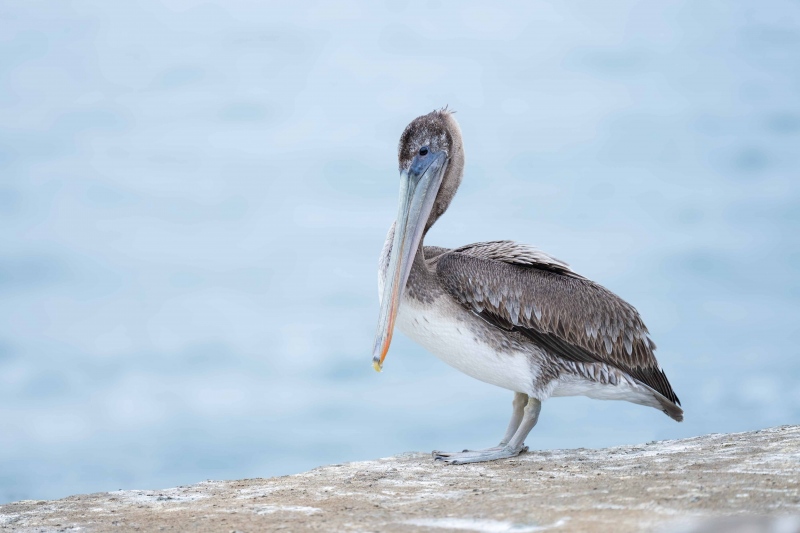
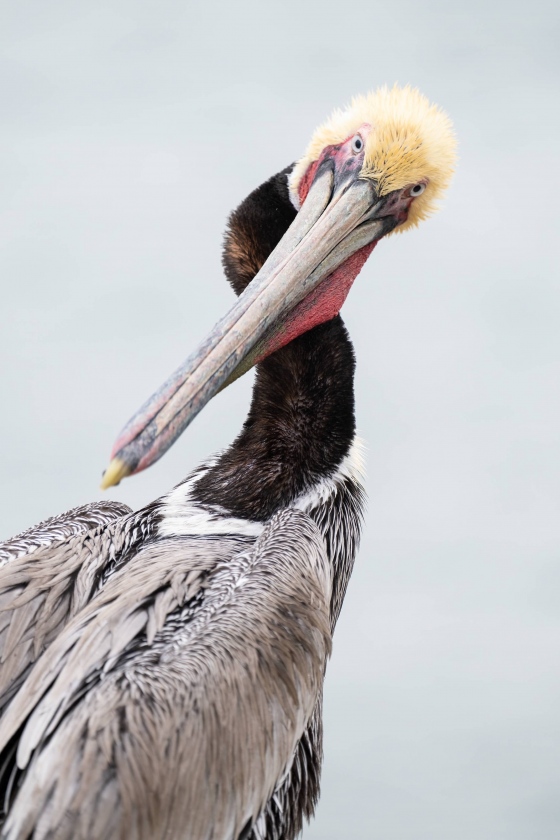
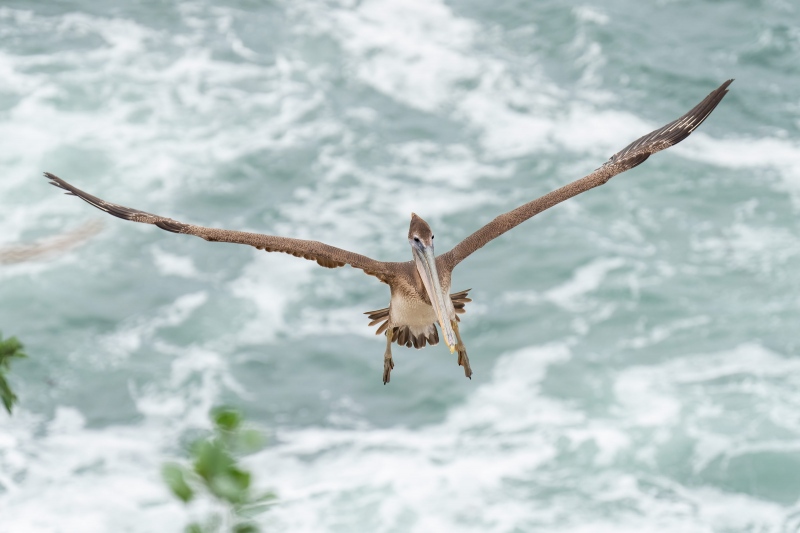
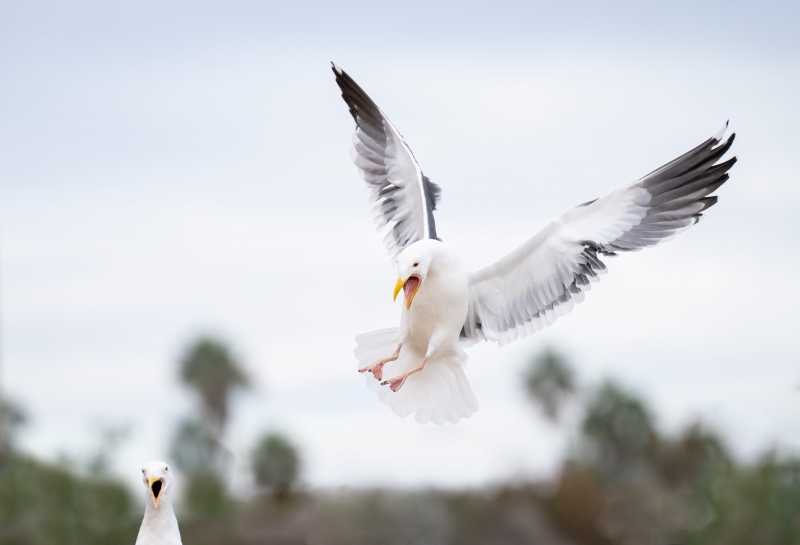
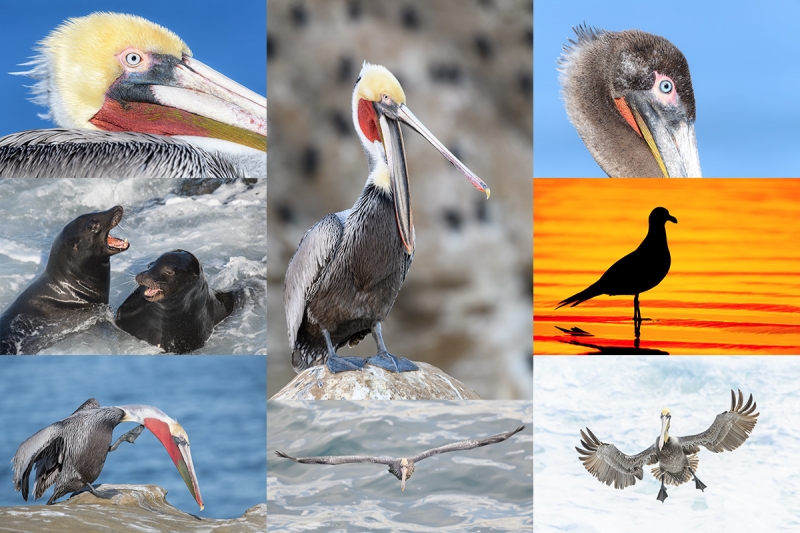
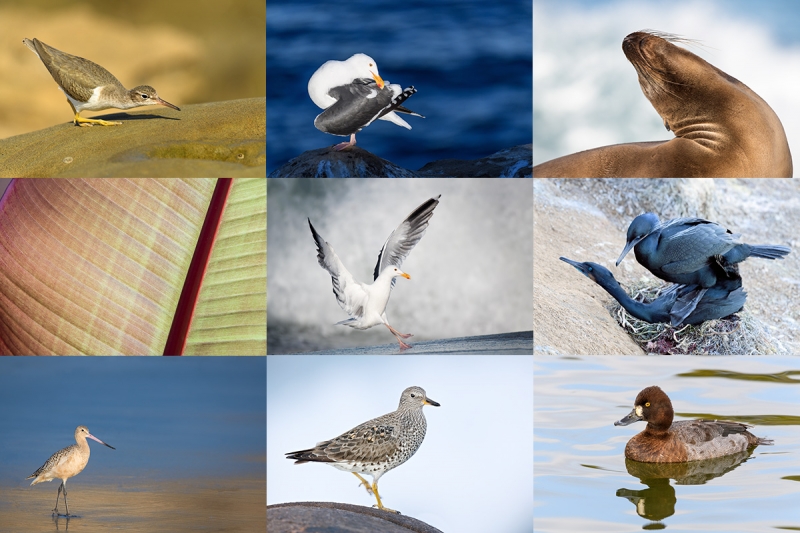















Good morning Guru. Hope you’re doing fine.
Breathtaking images as always.
Guru, I have one curiosity. Did you try DSLR lenses on MILCs via adaptors? If yes, how were the results?
Thank you in advance.
Thanks. I use my Canon 180mm macro lens with the Metabones adapter with good success. But I am always focusing manually. If you are talking about a same brand adpater, those all work great. But if you want to use a MILC on a lens from another system my understanding is that AF suffers …
with love, artie
The 70-200 sounds like an interesting lens and I am happy to hear that it is performing well w or w/o TC’s. The set up you describe is quite versatile and one which lends itself to compact travel. Call me a purist, I like image #1
Like myself, you’re still in 2021 😉
My favorite is #2 because the pelican is in such a wierd position — which is something pelicans seem to do a lot.
Image #4– HaHaHa!!!
Hi Artie,
I’ve been on the fence regarding getting v2 of the Sony 70-200 but your review combined me to order one thru your Bedfords link. Btw, I spent a day with you at Gatorland a few years ago on my spring break!
convinced not combined!!!
1/60 on a 200mm lens is less than two stops of OSS/IS/VR, assuming 1/shutter speed is what is needed to get a sharp shot without stabilization. Even if you were to say 1/400 is what is necessary at 200mm, that’s still less than three stops of stabilization. If things were completely still I would expect you to be able to get a large majority of photos tack sharp with 1/60 shutter speed. We’re you facing wind or something else?
Just hand holding at age 75 🙂
With love, artie